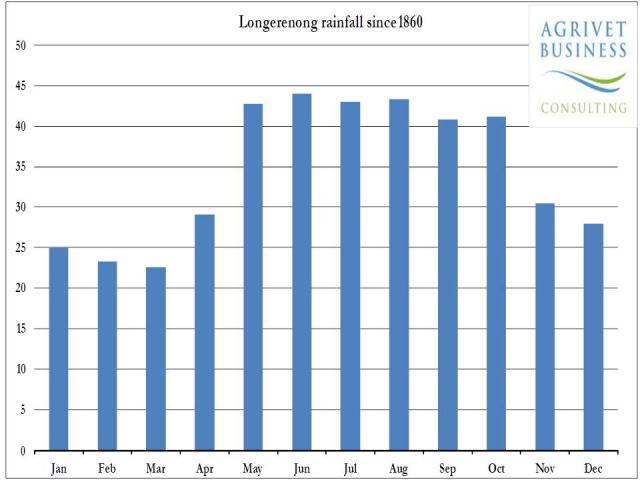Wimmera
The Wimmera region is minor in comparison to the Victorian high rainfall zone and eastern Riverina. Despite the attractiveness of backgrounding in the Wimmera, the actual area of suitable faba bean stubbles is not that large, and while the region used to be a sheep/wheat zone, many producers focus mainly on crop. Quality faba bean stubble is typically available for around six weeks.
| Zone | Growing season | Rainfall amount | Pasture types |
|---|---|---|---|
| Wimmera
Example: Longerenong (near Horsham) | Seasonal variation is quite significant in this region in contrast to the high rainfall zone and the eastern Riverina. In a poor season producers are more likely not to trade lambs. | Low (426mm at Longerenong), winter dominant. Suitable for cropping. West Wimmera-irrigated lucerne is used predominately for seed crops, which excludes grazing. | Crops: cereals, canola, faba beans, lentils. Very small area of lupins. Background on cereal and faba bean stubbles, then finish on faba bean stubbles or in a feedlot. Pastures hay off in late October/November, and then are of poor quality. |
| Feedstuff | Liveweight gain in grams per head per day (g/hd/day) |
|---|---|
| Faba bean stubbles | 250g/hd/day for about 6 weeks at 7.5 lambs per hectare (estimated). Longer periods on faba beans stubbles: 150g/hd/day (about twice expected growth rates of lambs on cereal stubbles). |
| Total income ($/head) | $125.52 |
|---|---|
| Total costs ($/head) | $91.40 |
| Profit ($/head) | $34.12 |
| Return in investment | 37% |
The obvious comparison for the Wimmera in WA is the Wheatbelt. Both areas have similar rainfall patterns and land use is dominated by crop. However, the two regions are significantly different in other ways.
The soil types of WA are generally not conducive to growing faba beans with resultant yields usually disappointing. Further, lupins have a place in the northern Wheatbelt, but are yet to have a large impact on land use in the central, southern and eastern Wheatbelt, where the dominant land use is cereal grains and canola. Neither stubble provides lambs with much feed for backgrounding, let alone finishing.
There is potential for backgrounding and finishing on home-grown grain in the Wheatbelt at a lower cost than could be achieved in south west WA. This is likely to be the main way producers could undertake this enterprise profitably, but would need to be near store lambs and abattoirs so freight costs are controlled. Unless there are large gains in faba bean and lupin breeding, there seems little potential for these regions to background lambs in WA.

